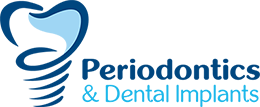Below is a list of frequently asked questions from our patients.
What is a Dental Implant?
A dental implant is a small titanium screw that serves as the replacement for the root portion of a missing natural tooth. Dental implants can be placed in either the upper or lower jaws. Due to the biocompatible properties of titanium, a dental implant fuses with the bone and becomes a good anchor for the replacement tooth. Dental implants can be used in solutions for replacing Single, Multiple or All missing teeth.
Single Missing Tooth?
When both the tooth and root are damaged, the best permanent replacement is a dental implant in conjunction with a ceramic crown. This solution both looks and functions just like a natural tooth.
In this case, a so-called one-piece implant is used. This means that all components are installed as a single unit, resulting in immediately full functioning teeth, shorter treatment time and minimized pain.
Several Missing Teeth?
In this case, when replacing three teeth in the far back of the mouth, a fixed bridge anchored to dental implants is the only fixed alternative. Traditional dentures can’t offer the same stability or function.
What are the benefits of a fixed bridge on implants?
When all teeth are missing or in such condition that they need to be replaced, a fixed bridge anchored to dental implants is the best permanent solution.
Before dental implants, there were no fixed solution available for people who lost all their teeth. Today, it is possible to replace a full jaw with dental implants and a fixed bridge that results in a permanent, stable and high esthetic solution.
Will my insurance cover the Cost?
Dental insurance policies often cover periodontal treatment. Please bring all dental and medical benefit information and cards to your examination appointment. Upon request, we will verify your insurance benefits. If the procedure is a covered expense, your insurance company will send a reimbursement check directly to you.
How do I get Gum Disease?
Periodontal (gum) disease is an infection of the tissues that hold your teeth in place. It's typically caused by poor brushing and flossing habits that allow plaque—a sticky film of bacteria—to build up on the teeth and harden. In advanced stages, periodontal disease can lead to sore, bleeding gums; painful chewing problems; and even tooth loss.
Our mouths are full of bacteria. These bacteria, along with mucus and other particles, constantly form a sticky, colorless “plaque” on teeth. Brushing and flossing help get rid of plaque. Plaque that is not removed can harden and form “tartar” that brushing doesn’t clean. Only a professional cleaning by a dentist or dental hygienist can remove tartar.
There are a number of risk factors for gum disease, but smoking is the most significant. Smoking also can make treatment for gum disease less successful. Other risk factors include diabetes; hormonal changes in girls and women; diabetes; medications that lessen the flow of saliva; certain illnesses, such as AIDS, and their medications; and genetic susceptibility.
How to avoid Gum Disease?
Brush your teeth.
Brushing after meals helps remove food debris and plaque trapped between your teeth and gums. Don’t forget to include your tongue, bacteria loves to hide there.
Floss.
Flossing at least once a day helps remove food particles and plaque between teeth and along the gum line that your toothbrush can’t quite reach.
Swish with mouthwash.
Using a mouthwash can help reduce plaque and can remove remaining food particles that brushing and flossing missed.
Know your risk.
Age, smoking, diet and genetics can all increase your risk for periodontal disease. If you are at increased risk, be sure to talk with your dental professional.
What is Periodontal Disease?
eriodontal disease, or gum disease, is the leading cause of tooth loss in adults, affecting 3 out of 4 people at some point in life. It can be treated successfully, if detected in time. Treating and preventing gum disease brings great health benefits. By retaining your natural teeth, you can chew more comfortably and enjoy better digestion. You can have a healthy smile, a natural asset to your appearance. You can save money and avoid discomfort by preventing future dental problems.
Periodontal disease affects the gums and supporting tissue of your teeth. In gingivitis, the early stages of periodontal disease, gum tissue may become red, swollen, and bleed easily. Periodontal disease is a more advanced stage where bone and tissues supporting the teeth are destroyed. Pockets filled with infection form around the teeth. As the disease progresses, teeth become loose and may eventually fally out or require extraction.
What is Laser Periodontal Therapy?
Laser treatment is an advanced technique for Dr. Hassan to treat periodontal (gum) disease. A laser light is used to gently remove harmful bacteria and disease tissue from the gum pocket. This allows the body to heal naturally so that the gum pockets improve and the teeth become more stable. The laser is a wonderful tool that will help many patients bring themselves to a more healthy state.
What is Oral Sedation?
Sedative medication helps relax patients by slowing the action of the central nervous system. People remain aware of their surroundings, but are less responsive to external stimuli like the sound of the drill or the smell of materials.
What is Intravenous Sedation?
IV stands for intravenous. Medication that is administered intravenously is administered through the veins. Because of its rapid effects many patients prefer this option.
Do I need a referral to see a periodontist?
Prevention and treatment of slight periodontitis can be fully accomplished at a general dentistry practice. Your general dentist will refer you to a periodontist if the disease has progressed to an extent and level of complexity that requires a more involving therapy. You do not need a referral to see a periodontist if you have history of gum disease in your family or want to have a detailed exam with risk assessment.
What will it cost?
Since patients needs vary on the case basis, Dr. Hassan must complete your examination before establishing your treatment plan. The fee for periodontal treatment can vary considerably depending on the type of problems and the complexity and length of treatment. An approximate fee can usually be determined at the initial visit; but on occasion, some initial treatment or further diagnostic images, such as CBCT (cone beam computer tomography), must be completed before the final treatment planning can be established.
When will I go back to my General Dentist?
Our office and your general dentist will work closely together. If crowns, fillings, or temporary provisional prior to implant placement are needed, your dentist will provide them to us. After the active phase of periodontal/implant therapy is completed, you will enter the supportive periodontal/implant therapy stage and resume a maintenance schedule customized to your needs. Regular visits to your dentist are an important part of periodontal maintenance. Our offices will communicate and design a maintenance schedule that is best for you.
Will it hurt?
We will be as gentle as possible. The periodontal exam can be completed with little or no discomfort.
Do I need X-rays?
We will need current periodontal x-rays in order to see disease not otherwise visible. If your referring dentist has taken x-rays, you may request that they be forwarded to us.




